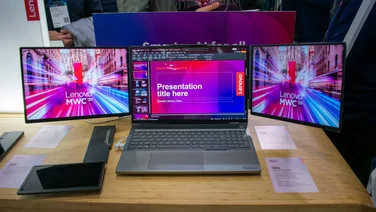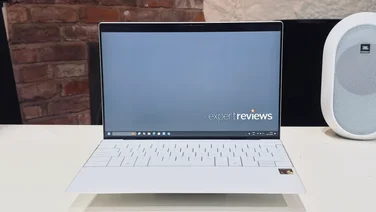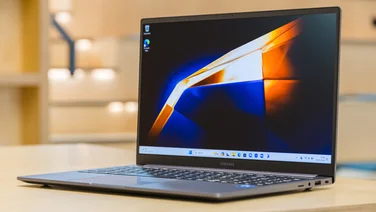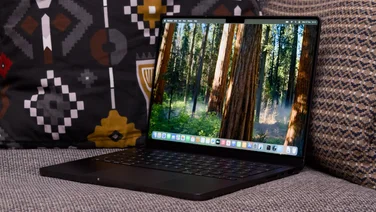To help us provide you with free impartial advice, we may earn a commission if you buy through links on our site. Learn more
- Asus ROG Strix Scar 15 review: What you need to know
- Asus ROG Strix Scar 15 review: Price and competition
- Asus ROG Strix Scar 15 review: Design and build quality
- Asus ROG Strix Scar 15 review: Keyboard, touchpad and webcam
- Asus ROG Strix Scar 15 review: Display, audio and webcam
- Asus ROG Strix Scar 15 review: Performance and battery life
- Asus ROG Strix Scar 15 review: Verdict


















- Supremely powerful and capable
- Has a MUX switch
- Impressive light show
- No webcam
- Disappointing speakers
Asus has been quick off the blocks with gaming laptops offering Intel’s latest Alder Lake CPUs and Nvidia’s new Ti GeForce GPUs. We’ve already been impressed by the Zephyrus M16 and Strix Scar 17 machines, the former a do-it-all behemoth aimed at both the gaming and creative community, the latter a big-screen fire-breathing thoroughbred aimed more exclusively at gamers.
Now we have the Strix Scar 15, which is essentially a smaller version of the Strix Scar 17, with a near-identical specification but with a slightly lower price attached.
Asus ROG Strix Scar 15 review: What you need to know


















Like its ROG Zephyrus and Strix 17 brethren, the Strix 15 is state of the art. Hauling the coal is a 14-core Intel Core i9 12900H processor – the most capable mobile CPU Intel has ever produced and a massive leap forward from the 11th-gen processors it replaces
Predictably, an Nvidia RTX 3070Ti GPU is also inside; a small but useful update of what was the pick of the GeForce RTX series offering usefully more performance than the RTX 3060 but without the high price of the RTX 3080.
The rest of the spec is top-notch, too, with a 1440p, 240Hz display, 2TB of PCIe 4 SSD storage, a quad-speaker sound system and all the expected gaming add-ons like a full-RGB per-key light show, replacement hinge caps and Asus ROG’s trick Keystone magnetic key.
There’s also a thoughtfully laid-out and high quality keyboard, a beefy 90Wh battery and Asus ROG’s comprehensive Armoury Crate control panel that gives you granular control over how the Strix 15 looks, behaves and performs.
READ NEXT: Best gaming monitors to buy
Asus ROG Strix Scar 15 review: Price and competition
There’s only one model of the Alder Lake Strix 15 on sale in the UK at the moment and it will set you back £2,399. The Strix 15’s big brother, the £2,549 17.3in Scar Strix 17 shares all the 15’s core components but comes with 32GB of RAM which gives it an advantage when it comes to non-gaming performance. You also get a numeric keypad and a larger, though still 1440p, display. If you don’t plan on using an external monitor for your gaming then the bigger screen alone is arguably worth the extra money.
Another new machine from Asus ROG is the Zephyrus M16. For £170 more than the Strix 15 you get the same CPU and GPU albeit with 32GB of RAM and an absolutely gorgeous 16.1in 2,560 x 1,600 ROG Nebula 165Hz display. You’ll have to forgo the Strix-series lighting effects but in every other way, the Zephyrus is just as much a thoroughbred gamer.
The most powerful laptop we tested in 2021, Acer’s awesome Predator Helios 500, is still worth considering – not least because of its potential for overclocking, which is why it ships with not one but two power supplies. The Helios 500’s mini LED display is a cracker, too – it’s super bright and super sharp thanks to its 3,840 x 2,160 resolution, though the 120Hz refresh rate may be a bit low for some.
Asus ROG Strix Scar 15 review: Design and build quality
In looks and build, the Strix 15 is essentially a cut-down version of the Strix 17, lacking only the larger machine’s expanded keyboard with its numeric pad. As you would expect, it’s smaller and lighter than the 17.3in model, though at 354 x 259 x 27.2mm and 2.3Kg it’s not that much smaller and lighter. Like the Strix 17, it’s made from a combination of plastic and aluminium and is every bit as solid as the bigger machine.


















The range and positioning of the ports and sockets are again the same with two USB-A 3.2 Gen 1 ports and a 3.5mm audio jack on the left and Thunderbolt 4, Type-C 3.2 Gen 2, 2.5GbE RJ-45 LAN and HDMI 2.1 ports on the back alongside the DC-in jack. The wireless side of things is taken care of by a MediaTek MT7922 Wi-Fi 6E card that also supports Bluetooth 5.2.
When you remove the bottom panel, you will need to be careful of the two ribbon cables that connect the motherboard to the lighting system built into the base panel itself. Once those are out of the way you can access the two SODIMM memory slots and the vacant 2280 SSD bay that sits alongside the existing and pretty quick (4,487MB/s sequential read, 1,949MB/s sequential write) 2TB Samsung card.
READ NEXT: Best PC gaming headsets to buy
Asus ROG Strix Scar 15 review: Keyboard, touchpad and webcam
The keyboard base is absolutely solid so you can hammer away at it with impunity while the optical-mechanical keys themselves have enough travel – 2mm to be precise – to keep all potential users happy.
Five hotkeys above the keyboard give quick access by default to the Armoury Crate app, performance modes, volume and the mute facility on the built-in microphone. The row of media keys that sit to the right of, and separated from, the main keyboard are also very useful.


















The all-important arrow keys, meanwhile, sit apart from the main keyboard below the right-shift key and fall to hand readily. The faultless trackpad is located centrally to the keyboard rather than offset to the left per the Strix 17, but it’s the same size at 130 x 77mm.
After any serious amount of gaming, the keyboard deck of the Strix 17 started to get very hot around the Tab and Esc keys but this wasn’t something I experienced to the same degree on the Strix 15. The fans in the Strix 15 were no more noisy than those in the 17, and the draft out of the side vents felt no more powerful, but clearly there is a difference in exhaust management.
Asus ROG Strix Scar 15 review: Display, audio and webcam
The 240Hz 2,560 x 1,440 IPS display could be a little brighter – it maxes out at just 317cd/m2 – but otherwise, it’s a very good effort. At 188ppi it’s certainly crisp enough and it’s colourful, too, returning gamut coverage and volume percentages of 99.9 and 142.5 sRGB and 98.2 and 100.9 DCI-P3.
The contrast ratio of 1,079:1 was rather better than the otherwise similar Strix 17 display. The Delta-E colour variance was a little high at 2.74 sRGB and higher yet against the DCI-P3 profile but that’s nothing disastrous and again mirrors what I experienced with the Strix 17.


















To maximise performance and video quality while gaming, the Strix 15 comes with a multiplexer or MUX switch that connects the display directly to the Nvidia GPU. Having the discrete GPU ‘always on’ reduces battery life, and bringing the integrated Intel Iris Xe graphics chip back into the game involves a restart, but those are small prices to pay for having this facility which many serious gamers regard as a must-have.
On paper, the Strix 15 and 17 share the same speaker system – a quad affair with Dolby Atmos certification – but in the smaller machine it sounded more constrained and wasn’t quite as loud, peaking at 80dB measured at 1m to the Strix 17’s 84dB. It’s not that the sound system on the Strix 15 is poor exactly, it works perfectly well in gaming scenarios and there’s a decent amount of bass, but it’s just not as expansive or as musical as I would have liked.
Like the Strix Scar 17, the 15 forgoes a webcam and any sort of biometric security and again this left me feeling ever so slightly short-changed.
Asus ROG Strix Scar 15 review: Performance and battery life
In our usual multimedia benchest, the Strix 15 scored less well than the Strix 17 or the Zephyrus M16. Why? Because both those notebooks have 32GB of RAM compared to the Strix 15’s 16GB. The Strix 15’s score of 420 (compared to the Strix 17’s 508) is still stonkingly quick and far better than anything we’ve seen from any machine with an 11th generation Intel Core i9, AMD Ryzen 9 or Apple M1 processor. Even the monster Acer Predator Helios 500 only scored 358.
The giveaway to the Strix 17 is less obvious in the GPU-intensive SPECviewperf 3dsmax test (99fps vs 106fps) but easier to see in the GeekBench 5 multi-core compute test (11,384 vs 14,370).

When it comes to gaming, the Strix 15 is much, much closer to the Strix 17 because it uses exactly the same GPU with the same amount of vRAM. Across the board, the Strix 15 only gave away a few frames per second here and there to the Strix 17 and like the larger machine is easily capable of running even the most demanding titles at triple-digit frame rates at 1080p high settings with judicial use of Nvidia’s clever DLSS upscaling tech.
Running the Wolfenstein: Youngblood benchmark at the highest settings (“Mein Leben!” video quality, 1,440p resolution, ray tracing but no DLSS) the Strix 15 managed 97fps. At FHD that increased to 148fps. The Hitman 2 test scored 68fps at 1080p and 43fps at 1,440p but if you drop the SuperSampling from 2 to 1 you will see 110fps at 1440p.

Moving on to Shadow of the Tomb Raider, which ran at 66fps at 1,440p without DLSS and ray tracing set to Ultra. Knocking the resolution back to 1080p and engaging DLSS pushed the frame rate up to 97fps. Finally, the Metro Exodus test hit 90fps on the Extreme setting but with the resolution knocked back to 1920 x 1080 and DLSS set to Balanced.
The 90Wh battery lasted 7hrs 33mins in our rundown test, which is some 15 minutes better than the Scar 17 and again not a bad showing for a full-on gaming notebook. As with the larger machine, the chunky 280W power adapter can recharge the battery to 50% in just 30 minutes and there is support for USB Type-C charging up to 100W if you want to travel light with a smaller power supply.

READ NEXT: Best gaming laptops to buy
Asus ROG Strix Scar 15 review: Verdict
The Strix Scar 15 is a great gaming laptop for many of the same reasons the Strix Scar 17 is. If you don’t mind the extra weight and size, go for the 17. For an extra £150 you get double the RAM, a larger display, a slightly better speaker system and an expanded keyboard. The extra 16GB of RAM and 1.7 inches of screen diagonal are both well worth having, too.
For me, however, the 15.6in form factor makes this the gaming machine to beat this year. It’s fast, well made, a pleasure to use and to game on and it isn’t as expensive as you might have thought, either.






